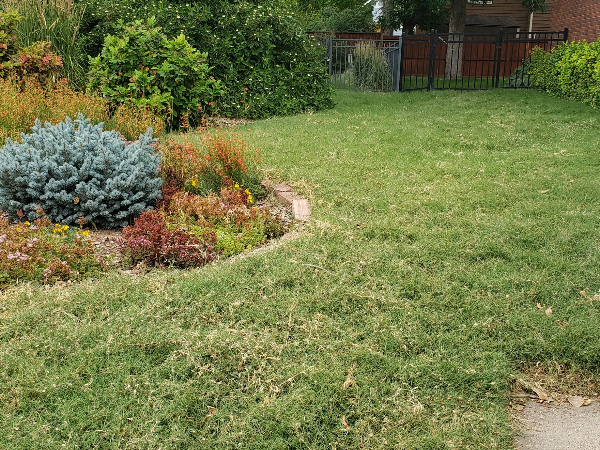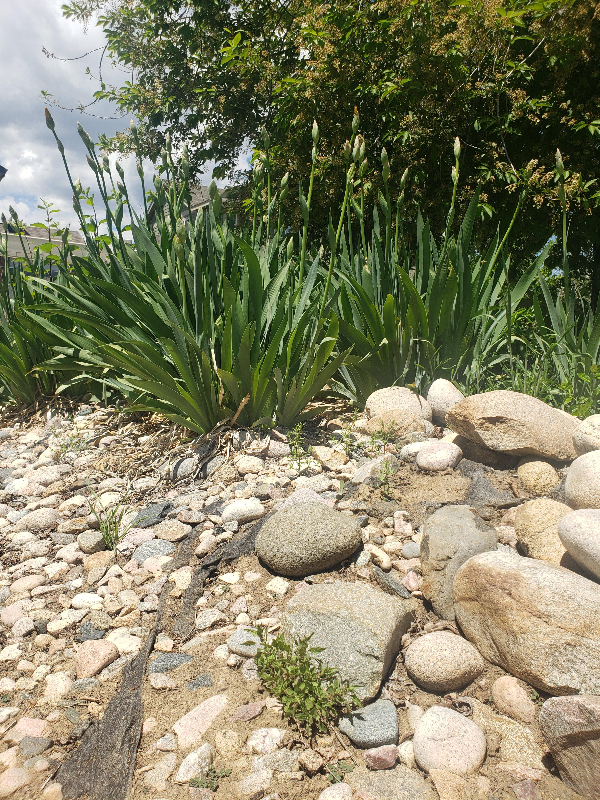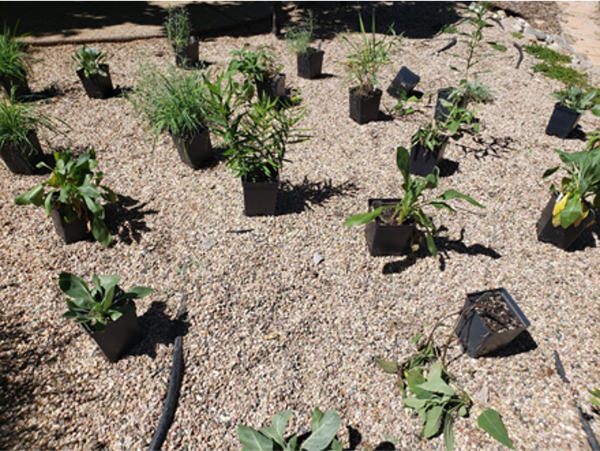Xeriscape#
With the semi-arid climate and unique soil conditions in our region, xeriscape is a way to save water, time and money in your landscape. Xeriscape is an attractive, sustainable landscape that conserves water, is based on sound horticultural practices, and shows evidence of care.
Xeriscape provides a diversity of seasonal colors and textures, lowers outdoor water use 30-50% and reduces yard maintenance.
-
Xeriscape - Based on Sound Horticultural Practices
Follow these steps for a low water-using, yet beautiful, landscape.
1- Plan Ahead- Create a scaled drawing of the lot, including buildings and walks. Identify sunny and shady areas, slopes and views.
- Evaluate the needs of people using the landscape. Do kids and pets need a big open area? Is a large deck for entertaining important?
- Group plants with similar water needs to make watering easier.
- Phase in the landscape plan as money and time allow.
2- Improve the Soil
- Good soil absorbs and retains water better than poor soil.
- Send a soil sample to a soil lab to determine nutrient content.
- Most Colorado soils benefit from adding two to three cubic yards of organic matter, such as commercial compost or aged manure, for every 1,000 square feet of landscape area.
3- Irrigate Efficiently
- Grass: use low-volume, low-angle sprinklers.
- Trees, shrubs, flowers and ground covers: use drip, spray or bubbler emitters.
- Adjust your watering times monthly to meet seasonal needs.
- Install a rain shutoff device.
- Efficient hose-end sprinklers throw large drops of water, not a mist, close to the ground.
- Water deeply and infrequently to develop deep roots.
- Water between 9 p.m. and 8 a.m. to reduce water loss due to evaporation.
- Read about water-efficient sprinkler systems.
4- Limit Turf Areas
- Confine the lawn to high traffic areas and areas where it will be used.
- Kentucky bluegrass requires 24-26 inches of supplemental irrigation in a normal precipitation year, compared to Fine Fescue which requires 18-20 inches and Buffalograss which requires 8-10 inches.
- Wildflowers and native grasses are excellent lawn substitutes.
- Shrubs, perennials and ground covers use less water and provide a cool, green appearance.
- Place mulch around driveways or as paths.
- Expand outdoor-living areas by installing decks, patios and walkways.
5- Select Appropriate Plants
- Zone together plants with similar water and sunlight needs.
- Nurseries carry trees, shrubs, perennials and groundcovers that are low water-using.
- Install a variety of plants with different heights, colors and textures.
- Choose plants for their seasonal interest, including fall color and/or interesting berries, bark or seed heads.
- Check out Utilities' Xeriscape Plant List.
6- Use Mulch
- Cover planting areas with 2-4 inches of mulch to conserve soil moisture, control weeds and add interest to the landscape.
- Bark chips, shredded wood chips or pole peelings decompose and improve soil texture but need to be restored from time to time.
- Rock and gravel mulches are practical in windy spots and unplanted areas.
- Apply mulch directly to the soil surface or over a landscape fabric.
- Do not use black plastic; it prevents air and water from reaching plant roots.
7- Maintain It
- Check trees and shrubs for pruning needs once a year.
- Frequently prune flowering perennials to stimulate blooming.
- Mow grass when it is about 1/3 higher than the desired height.
- Leave clippings to recycle nutrients into the soil.
-
Before selecting plants, understand your site conditions such as soil type and drainage, sun exposure and proximity to supplemental water like irrigation, downspouts or hose bibs. Given this information, select the right plant for the right place by using local plant list resources such as our XIP-Approved Plant List (You can also view this interactive plant list with photos and filter options). All plants listed are suitable for our USDA plant hardiness zone (5b in Fort Collins), which relates to average freezing temperatures for our area.
Always group together plants with a similar water requirement to avoid under- or over-watering plants.
Top 3 Water-Wise Garden Questions#
The Fort Collins Utilities’ Xeriscape Incentive Program has been helping residents tranform landscapes since 2015. Throughout the years, we’ve collected all the questions we’ve been asked. Read on for our top FAQs:
-
First, a little background. There are two general groups of grasses: warm-season and cool-season. See below for examples of each type.
Type Warm-Season Cool-Season Examples of species Buffalo grass, blue grama, bermudagrass Kentucky bluegrass, fescue
Characteristics
Only green in the summer months when warm temperatures are consistent.
Irrigation not needed until grass starts to green and even then may not need supplemental irrigation.
Don’t tolerate shade.
Green in the “shoulder months” of the growing season when precipitation is more frequent, and temperatures are cooler.
Start to go dormant in hot summer months unless regularly watered.
Irrigation not needed until footprints remain in the grass.
Can tolerate some shade![A front yard with buffalo grass in July.]()
A front yard with buffalo grass in July.
Kentucky bluegrass makes a good lawn for a lot of reasons, like a great dormancy mechanism. For example, if one of my sprinkler zones was leaking in July and I had to shut it off until I got around to repairing it, my bluegrass would likely turn brown quickly. Luckily, the grass for the most part will have gone dormant, not dead. Once I get water back on it, it’ll bounce back. This is also the reason you cannot overseed with a different kind of grass and expect the new grass to take over. Dormant bluegrass is not dead bluegrass so when it sees water again (like when you start irrigating your new buffalo grass seed) it’ll start to grow again. This results in a patchwork of competing grass species. Unless you’re going for a prairie-style landscape, in a manicured (i.e. mowed), urban setting, patchwork is not preferred.
Thinking about making the switch to warm-season grass?
Make sure it’s the right choice—warm-season grasses do not stand up to a lot of traffic and cannot handle shade. Make sure you are selecting a species that works well for your landscape.
Kill the existing grass—use a sod cutter to remove grass material completely, or kill the grass in place by solarizing with clear plastic or killing with chemicals.
Seed or plug--While seeds may be less expensive, plugs will cover an area faster. Either can be directly planted into existing dead grass.
Establishment watering--Whether seed or plug, your warm-season grasses need water to get started. Irrigate frequently enough to keep the soil moist but not muddy. As soon as the plants start rooting, begin to reduce the watering frequency. Overwatering will drown your plants and cause excessive weed growth.
Long-term watering—Wait for the grass to turn green before you start irrigating. Warm-season grasses require ¼ - ¾ ” of water per week during the summer.
-
![weed fabric showing through rocks]()
We strongly discourage the use of weed fabric in the landscape. While fabric may help keep weeds down for a few years, the negatives far outweigh this one positive.
- Weed fabric creates a physical barrier between soil and the outside world. As organic material such as leaves, plant debris and wood mulch decomposes on top of the weed barrier, it provides a nice spot for weed seeds to germinate. As those weeds mature and their roots pierce through the fabric, it becomes nearly impossible to manage them.
- Over time, as the fabric clogs with dirt, it doesn’t allow for proper oxygen exchange to plant roots and decreases the ability to allow water to infiltrate the soil. When a plant shows signs of this stress, you may be tempted to water more but that won’t solve the problem or save your plant.
- What’s the better option? A generous layer of wood mulch — 3-5 inches. You’ll need to replace wood mulch every two or three years as it breaks down which is less frequent than if you put wood mulch on top of weed fabric. Weed fabric is slippery and doesn’t give wood mulch anything to grip to. The result? Mulch that blows away in one season.
- And when that mulch blows off and fabric is exposed, it looks like trash bags in your landscape. Not a good look.
Purchase mulch at any home improvement store, nursery or landscape supply yard. You can also pick up FREE mulch from the City of Fort Collins. Free mulch locations are at the Gardens on Spring Creek parking lot and at the Timberline Recycling Center.
-
![waterwise landscape]()
Here are the three steps to establish a water-wise landscape:
1. Start with water
All plants need water to become established, even natives that originate from the driest parts of our state.
How much water? Consider the size of the original plant pot and water that volume each time you irrigate—likely once or twice a week in the first few weeks after planting. For one-gallon pots, water one gallon and so on.
If using drip irrigation, customize the size and number of emitters to water the recommended volume in one hour. Check the volume rate printed on the emitter, it is usually measured in gallons per hour (GPH).
If you are hand-watering, count the seconds it takes to fill a gallon-size jug with your garden hose. Hold the hose at each plant for the appropriate time.
2. Calibrate
Watch how your garden responds before and after watering events. If there are some plants that are drying out faster than others, add an additional or larger drip emitter. If others are getting flooded, goof plug a hole or two. The same applies to hand-watering.
3. Train the plants
After the first few weeks through the third year, when plants are likely established, reduce watering frequency. See how low you can go by year three—this could mean once a week or once a month, depending on the plant. Always check the soil moisture before irrigating to avoid overwatering.
Consider the following: If a drip irrigation system run for 15 minutes multiple times a week, the low volume of water stays in the top few inches of soil, incentivizing plant roots to only grow there. Coincidentally, soil dries out most quickly in this area, causing the need for more frequent irrigation.
Instead, water deep and infrequently to encourage roots to grow further into the soil. Deeper roots increase drought tolerance in plants.
Once plants are established, enjoy. You have raised them right!
Additional Resources#
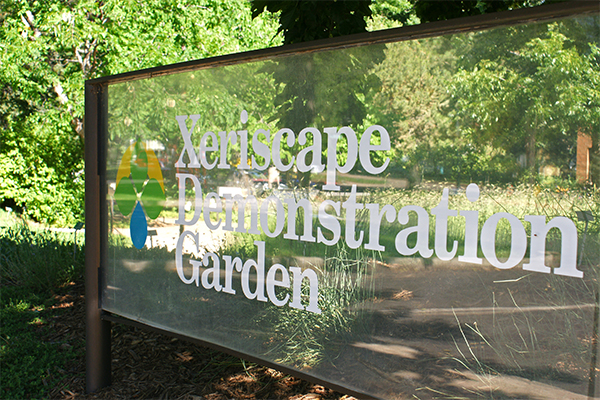
Demonstration Gardens
Xeriscape demonstration gardens showcase the methods, plants and materials for low-water gardening.
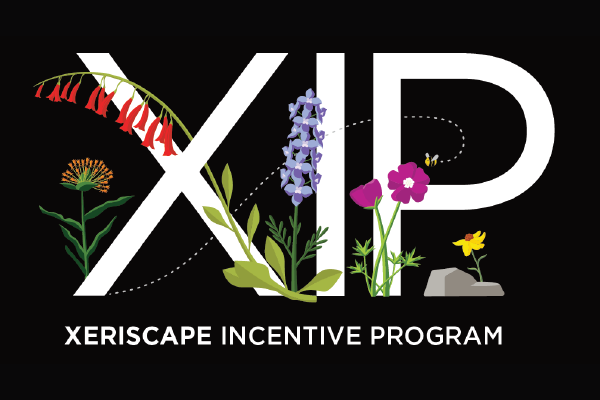
Xeriscape Incentive Program (XIP)
A comprehensive, education-based program offering Fort Collins Utilities water customers a rebate for transforming a pre-approved high-water use area to a water-wise landscape.
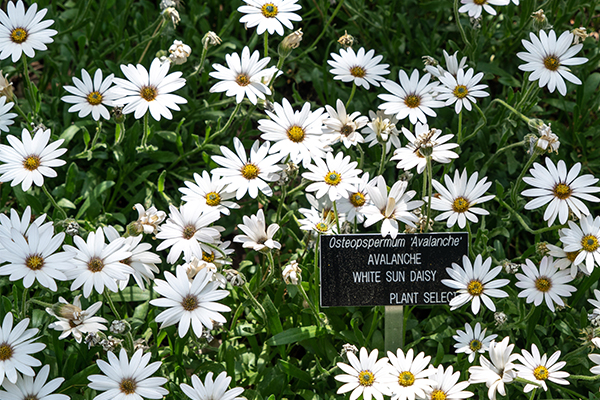
Xeriscape Resources
Find resources about turf removal/selection, soil amendment, mulch, irrigation, native plants, landscape design and more!
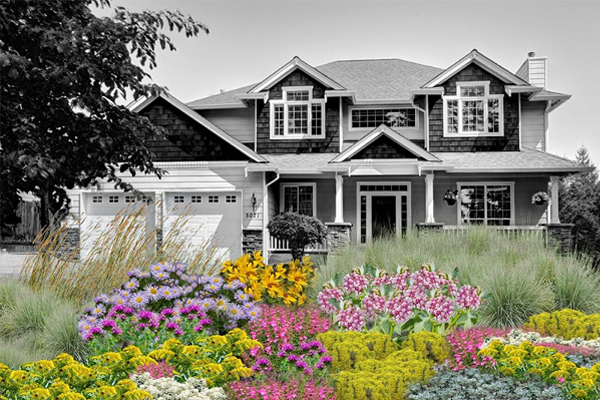
Garden In A Box
Do-it-yourself kits from Resource Central come with 15 to 30 starter plants, a comprehensive Plant and Care Guide, and one to three plant-by-number maps.

Garden Party
Learn from experts about improving your sprinkler system, selecting low-water use plants, composting, recycling, rain barrels and more.
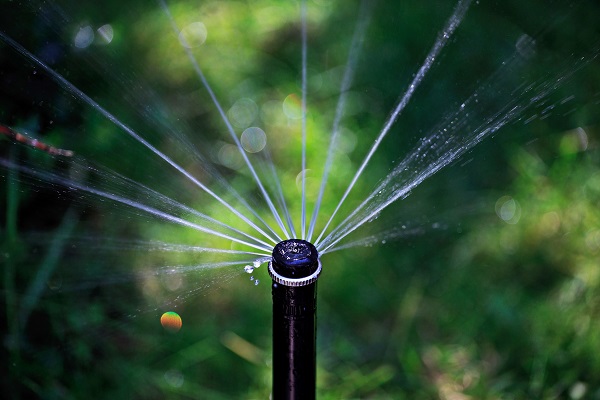
Sprinkler Checkups
A free sprinkler checkup helps you save water by using your sprinkler system more effectively.
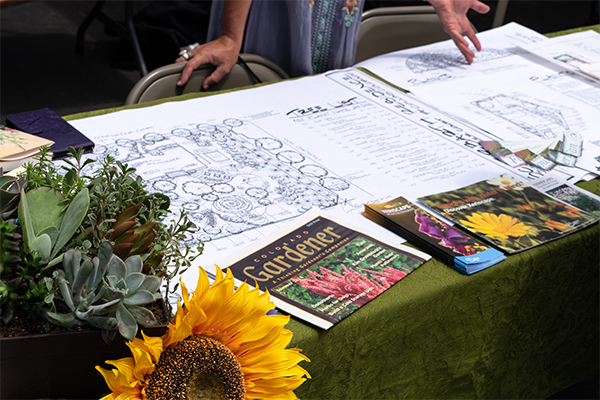
Water-Wise Professionals
These landscape and irrigation contractors know their stuff and are ready to help you achieve a water-wise landscape.
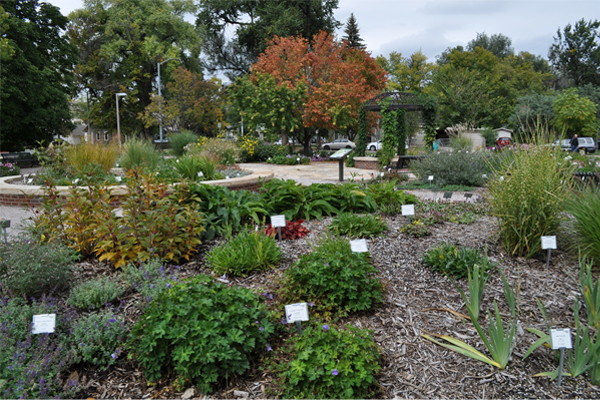
Plant List
Find a plant using this interactive City database of over 1,300 plants with photos. A third of the plants on the list are native to Fort Collins.
Did You Know?
After a rain, skipping watering until the grass dries will save not only water, but also money.
Planting fast-growing vines is a quick way to block unwanted summer sun. You'll get results in months.
Watering every third day helps the grass develop deeper roots and use moisture deep in the ground.
